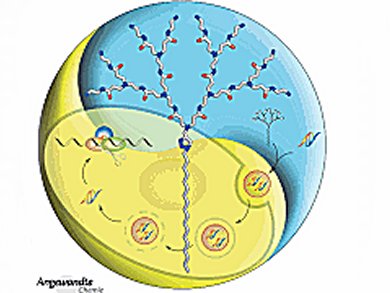
Light-controlled tools in chemistry are the subject of a Review by A. Heckel et al.: Where, when, and to what extent can processes be started or stopped in living systems, and what can we learn from this about malfunctions? In the Minireview in this issue, A. Sen et al. discuss self-powered nanorobots that can be directed by chemical and light gradients. The Highlights deal with the multicolor toolbox of D-luciferin analogues for bioluminescence imaging (W. Guo et al.) and the doping of light emitters into metal–organic frameworks (P. Falcaro and S. Furukawa). In the Author Profile, Martin Jansen answers interview questions from Bettina Lotsch.
In the Communications section, L. Peng et al. present an amphipilic dendrimer, which combines the advantageous features of lipid and dendrimer vectors, and produces potent gene silencing and anticancer activity. P. M. Pihko et al. report on cooperative assistance in the bifunctional organocatalysis of enantioselective Mannich reactions. P. Audebert et al. succeeded in the generation of white fluorescence from core–shell silica nanoparticles. H. M. L. Davies et al. show how to synthesize alkynoates by using a rhodium(II) carbenoid approach.
- Browse issue 34/2012 now
Angew. Chem. Int. Ed. 2012,34.




